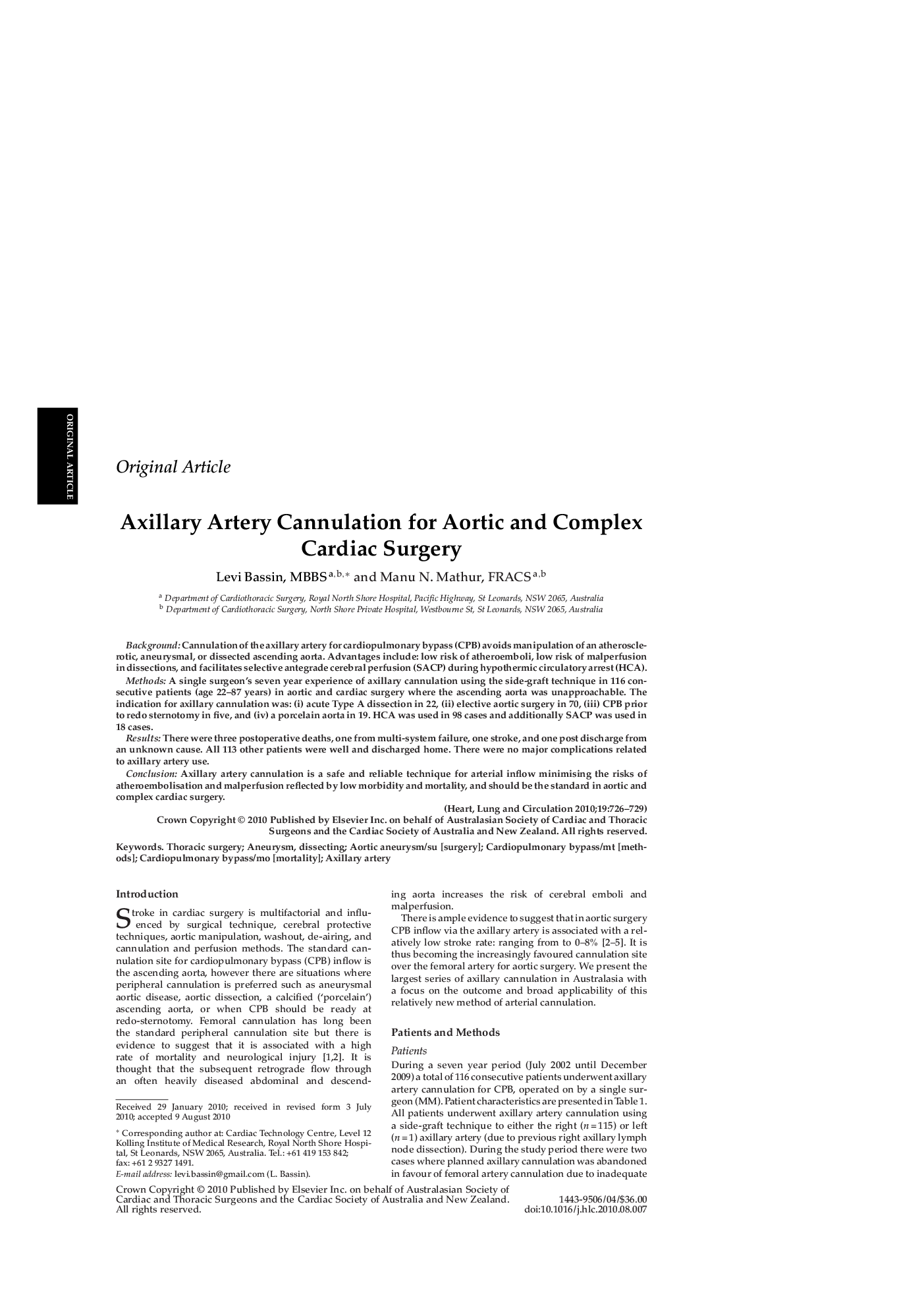| Article ID | Journal | Published Year | Pages | File Type |
|---|---|---|---|---|
| 2920261 | Heart, Lung and Circulation | 2010 | 4 Pages |
BackgroundCannulation of the axillary artery for cardiopulmonary bypass (CPB) avoids manipulation of an atherosclerotic, aneurysmal, or dissected ascending aorta. Advantages include: low risk of atheroemboli, low risk of malperfusion in dissections, and facilitates selective antegrade cerebral perfusion (SACP) during hypothermic circulatory arrest (HCA).MethodsA single surgeon's seven year experience of axillary cannulation using the side-graft technique in 116 consecutive patients (age 22–87 years) in aortic and cardiac surgery where the ascending aorta was unapproachable. The indication for axillary cannulation was: (i) acute Type A dissection in 22, (ii) elective aortic surgery in 70, (iii) CPB prior to redo sternotomy in five, and (iv) a porcelain aorta in 19. HCA was used in 98 cases and additionally SACP was used in 18 cases.ResultsThere were three postoperative deaths, one from multi-system failure, one stroke, and one post discharge from an unknown cause. All 113 other patients were well and discharged home. There were no major complications related to axillary artery use.ConclusionAxillary artery cannulation is a safe and reliable technique for arterial inflow minimising the risks of atheroembolisation and malperfusion reflected by low morbidity and mortality, and should be the standard in aortic and complex cardiac surgery.
